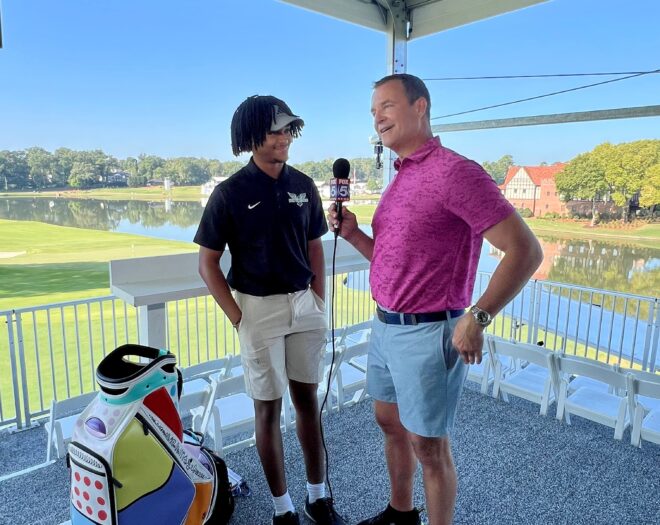Peralte C. Paul
The Atlanta Journal-Constitution
Every Monday, about a dozen students at the Charles R. Drew Charter School in Atlanta’s East Lake neighborhood get together to talk dollars and sense.
Though the temptation of after-school games of tag and getting dizzy on the merry-go-round distract their classmates, these kids —- in the third, fourth and fifth grades —- have been learning the ins and outs of financial responsibility, courtesy of a green-colored computer alien named Zing A. Ling, two real-life earthling counterparts, Chris Lea and Natalie Kipper, and the East Lake Foundation.
The two humans are bankers with Wells Fargo & Co., the nation’s fifth-largest financial institution.
The Hands On Banking financial literacy program, which started in 2004, is designed to get kids as young as 8 thinking about things like budgets, where money comes from, credit cards and ATMs.
“It’s less about giving direction,” Lea said on Monday afternoon. “It’s about showing options.”
For an upcoming test, the kids were reviewing what they had learned so far and how to use credit cards.
The program is part of a national effort to wean children on good savings habits and healthy attitudes toward money.
Already, Americans are spending $1.22 for every $1 earned, according to the Myvesta Foundation, a nonprofit group that aims to help people make smarter decisions about financial matters.
While baby boomers and Gen X’ers are spending more than they make and saving little or nothing, the successive generations —- Y and Z —- seem to be more on track. A U.S. Treasury Department study in 2000 said American teenagers accounted for about $155 billion in consumer spending and that more than 66 percent of them had savings accounts.
Financial institutions across the country have created programs aimed at the younger set to prevent bad money habits from taking root. In addition to banks, credit card networks are joining the financial literacy push.
On Tuesday, Visa was in town with the Atlanta Falcons’ Alge Crumpler to help students at Booker T. Washington High School learn money management skills through an interactive computer game called “Financial Football.” The Visa USA and National Football League initiative is part of a 17-city tour to get kids more engaged in financial literacy.
What differentiates Wells Fargo’s initiative somewhat is that the bank, which has $500 billion in assets and is headquartered in San Francisco, implements it nationwide, even in states where it doesn’t have a retail branch presence, like Georgia.
The company has about 800 employees in in commercial banking, treasury management and foreign exchange operations, among other businesses.
“It shouldn’t matter if we have retail branches there or not. Our goal is to teach people about money management so they don’t get into trouble,” said Wells Fargo spokeswoman Stephanie Rico. “The concern over financial literacy, it doesn’t stop with our retail presence.”
That’s where Zing comes in.
The computer-generated creature, brought to life on a movie screen, engages students through a series of interactive questions. The program and its Web site, handsonbanking.org, gets 5,000 unique visitors a month, and Wells Fargo has trained more than 3,000 teachers and 5,000 volunteers from its employee ranks to use the software and run classes in schools.
On a recent day, Zing and his earthling counterparts were discussing the difference between needs and wants. Tempting as the new PlayStation or competing game system might be, kids like Brenda Ontivelos, an 8-year-old third-grader, said that rent, food and buying supplies for pets are needs, while going out to dinner is a want.
Still, when Zing asked whether any of them were saving for something they wanted or needed, she piped up a definitive “no.”
But her fellow third-grader, Nequavious Brown, said he saves, even though he’s itching to spend.
“I save because I see stuff in the store I want, but I don’t have enough money saved up for it,” the 8-year-old said.
But it’s hard, he admits, with candy and games and toys all calling out to him and his friends.
“Everyone else is buying things,” he said with a wistful shake of his head. “I don’t buy anything.”
That’s the kind of self-restraint that Lea and Kipper said they want to instill in the children.
In one instance, when Zing was talking about credit cards and ATM cards, he asked the kids for the password to make a withdrawal.
“Responsibility!” they shouted in unison.




